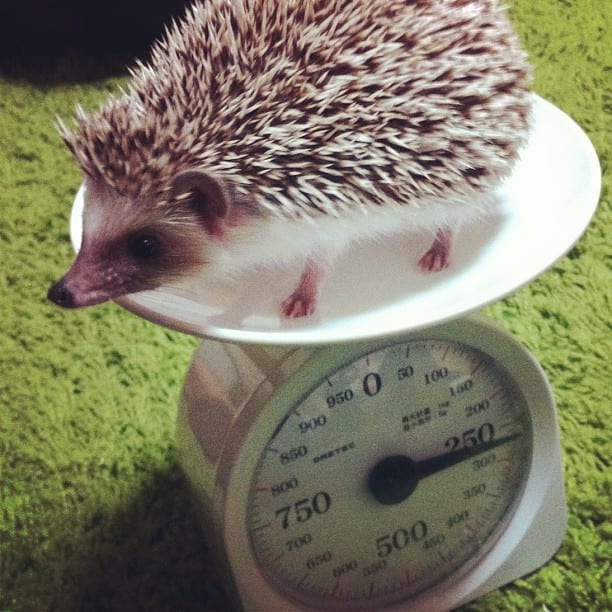To understand host-parasite relationships in wildlife, scientists often assess an infected animal’s body condition. New research from the University of Georgia shows that many studies find unexpected relationships, and that the design of such studies can affect their findings.
In a review and meta-analysis just published in Ecology Letters, researchers from the UGA Odum School of Ecology examined 187 published studies exploring relationships between infection and body condition across a wide range of species. The authors, led by doctoral candidate Cecilia Sánchez and former PhD student Daniel Becker, assessed how biological and ecological factors, as well as the methods used in the studies, influenced those studies’ results.
“We assumed that parasites are harming their hosts, and you can measure that by assessing an animal’s condition,” said Sánchez. “In reality, we see not only negative relationships (with infected animals in worse condition), but infected hosts are sometimes found to be in better condition, or there just might not be any relationship at all.”
According to Sonia Altizer, UGA Athletic Association Professor of Ecology and the study’s senior author, the ideal variables to show the effects of a parasite on its host would be animal survival and reproduction. These are difficult to assess in the wild, so scientists often use body condition measures that indicate muscle condition, fat reserves, or robustness in size as indicators of how much parasites are harming their hosts.
Sánchez and her colleagues created statistical models to analyze more than 550 records of host-parasite relationships across the animal kingdom, from fish and reptiles to birds and mammals. Parasites ranged from tiny microbes to intestinal worms and ectoparasitic insects. The models incorporated variables such as whether the host was warm- or cold-blooded, the type of parasite involved, how host body condition was measured, and whether the study experimentally manipulated infection or condition.
The researchers found evidence of negative, positive, and neutral relationships between host condition and infection, with an overall negative association that was stronger in experimental studies. They were surprised that most variables they tested, including host and parasite taxonomic group, didn’t explain variation in body condition-infection relationships.
Instead, they found that the major predictors of these relationships were whether the host was warm- or cold-blooded, and what method researchers used to assess its body condition.
According to Altizer, meta-analyses like this are important because they can bring to light ideas not previously considered or standardized in the scientific community.
One thing that sets this review apart, she said, is the number of papers it assessed. Altizer said that normally this sort of study will analyze 20 to 30 papers, while this one includes 187. A review comparing such a broad spectrum of data allows scientists to gain a statistically more holistic understanding of the phenomenon being studied, she said.
Meta-analyses can also generate insight into broader publication trends. Sánchez and her colleagues found evidence of publication bias towards negative relationships, implying that scientists may not be publishing findings of neutral or positive relationships between infection and body condition that run counter to expectations.
In their review, the researchers noted that parasites can affect their hosts in many, sometimes conflicting, ways. These can range from direct effects like damaging host tissue to indirect effects such as altering foraging behavior or triggering costly immune defenses. And depending on the host and parasite in question, the impacts of infection may not appear at once.
“One of the main recommendations or conclusions of the paper was that if researchers want to use body condition to try to detect the fitness effects of parasites, or whether they’re harming their hosts, they really need to think carefully about the biology of the infection itself and the time scale over which the condition could change in response to infection,” said Altizer.
The paper, “On the relationship between body condition and parasite infection in wildlife,” is available online at http://doi.wiley.com/10.1111/ele.13160. Besides Sánchez and Altizer, its coauthors are Daniel J. Becker (now at Montana State University), Claire S. Teitelbaum, Paola Barriga, Leone M. Brown (now at Tufts University), Ania A. Majewska and Richard J. Hall, all of the Odum School of Ecology. The research was supported by the National Science Foundation, the ARCS Foundation, the Wormsloe Foundation and the University of Georgia.
Photo: Scientists often use body condition measures that indicate muscle condition, fat reserves, or robustness in size as indicators of how much parasites are harming their hosts. The authors analyzed more than 550 records of host-parasite relationships across the animal kingdom, including a 2010 study of parasites in European hedgehogs by Gabriella Gaglio et al.
Photo Credit: By senov [CC BY 2.0 (https://creativecommons.org/licenses/by/2.0)], via Wikimedia Commons

